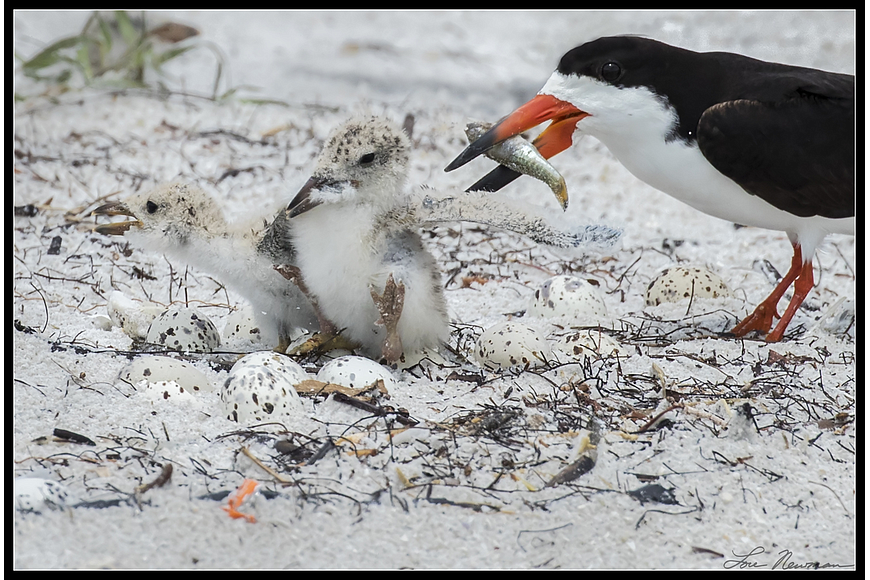- November 19, 2024
-
-
Loading

Loading

When Tropical Storm Colin washed away the black skimmer colony on Lido Beach, it took the nests with it.
To continue populating the colony, the birds did what any parents would do: They adapted.
After the storm, about 450 of the previous 700 adult skimmers returned to the colony site to re-nest. A week to two weeks later, new skimmer nests started popping up around the colony. After the storm, 110 new nests appeared with three to five eggs each.
“They stuck around because that was their nesting site regardless of it being washed out or not,” said Holley Short, coastal bird monitoring and stewardship coordinator at Audubon Florida.
Since then, all eggs have hatched, and about 205 have fledged, or learned to fly or fish on their own. About 30 chicks still need to fledge but are expected to do so in the next few weeks.
Despite the storm’s damage, the colony is set to surpass its number of chicks and overall population from last year. In 2015, the colony consisted of about 400 birds total, with 188 chicks.
The colony has returned to the same location for a few years. According to Short, skimmers that were not originally part of this specific colony could also be trying to join it.
Shortly after they are done nesting and the chicks fledge, skimmers will move on to other beaches for the winter.
“Where they are now is the same as last year,” Short said. “It’s a great spot for them. For the most part, it’s on the safe section of the beach until a tropical storm hits.”
Save Our Seabirds avian hospital administrator Dana Harenda said the hospital took in three skimmers following Colin. It’s unknown whether they were part of the colony on Lido Beach, but they were able to be released a few days after rehabilitation — a good sign for the entire population.
“They’re hard to rehabilitate in captivity because of their unique bill shape,” she said.